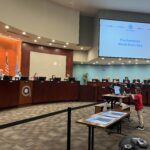Among the various skills that come with human cognition, few abilities are as impactful and fundamentally valuable as prospective imagination. Often referred to simply as “prospection,” this faculty enables us to “metabolize” (or take in and critically assess) experiences from our past and present and envision a wider array of future possibilities. This mental exercise isn’t simple daydreaming; it’s a sophisticated form of cognitive function that informs our decisions and actions. In the realm of leadership, the ability to effectively use prospective imagination can significantly impact not just the leader but also the organization they steer.
What is Prospective Imagination?
Prospection is often defined as “the mental process of projecting and evaluating future possibilities and then using these projections to guide thought and action”1. This definition neatly encapsulates the three core functions of prospection: envisioning, assessing, and guiding.
- Envisioning: This is the capacity to generate a broad range of potential scenarios, outcomes, and pathways that extend from your current situation.
- Assessing: Here, you evaluate the likelihood and desirability of each possible future, often by drawing on past experiences and current data.
- Guiding: Finally, the generated possibilities serve as a compass, directing both your decisions and the strategies employed by your team or the organization.
The Psychological Benefits
Leaders who excel in foresight—which is essentially a refined form of prospection—have been found to exhibit higher levels of optimism, self-efficacy, and resilience. On the other hand, they also experience lower levels of depression and anxiety2. Optimism fuels a can-do attitude, not just in you as the leader, but also across your team. Self-efficacy helps this by amplifying your belief in your ability to accomplish tasks, while your resilience ensures that setbacks are seen as temporary hurdles rather than insurmountable obstacles.
Preparing for Change: Emotional and Logistical Readiness
As a leader, you need to be both emotionally and logistically prepared for the future. Emotional readiness involves building resilience and fostering a positive organizational culture that can adapt to change. Logistical readiness, on the other hand, involves laying down concrete plans and strategies. Prospective imagination plays a crucial role in both aspects.
For example, by imagining potential market shifts, you can prepare your team for new challenges or opportunities. This can involve specialized training or investment in new technologies. On the emotional front, your attitude towards change will significantly influence how your team perceives and responds to it.
Interconnection of Past, Present, and Future
Prospection doesn’t operate in a vacuum; it analyzes the past and the present to create a projected future. This involves a dynamic interplay of memory, current assessment, and future projection. If you are aware of the interconnectedness at play here, you can create more comprehensive and realistic scenarios for the future, fine-tuning them through continuous learning and adaptation as reality plays out.
The Leader’s Role in Fostering a Culture of Prospective Imagination
Leaders should aim to cultivate a culture that values and practices prospective imagination. This includes making the time to encourage team members to think about long-term goals, potential challenges, and innovative solutions. When your organization collectively engages in prospective thinking, it is better equipped to navigate the nonlinear and ambiguous complexities of the future.
A Continual Exercise in Adaptation and Innovation
Prospective imagination serves as a tool for both immediate problem-solving and long-term strategizing. The leaders who embrace this approach will develop the skill of engaging in a dynamic, ever-evolving dialogue with the future. This doesn’t just increase your individual psychological well-being but also elevates your organizational culture, enhancing adaptability and innovation.
By effectively leveraging prospective imagination, you can lead your organization into a future where uncertainty is not a threat… but an array of opportunities waiting to be seized.
FOOTNOTES
1: Seligman, M. E., Railton, P., Baumeister, R. F., & Sripada, C. (2013). Navigating into the future or driven by the past. Perspectives on Psychological Science, 8(2), 119-141.
2: Stolarski, M., Wiberg, B., & Osin, E. (2015). Assessing Temporal Harmony: The Issue of a Balanced Time Perspective. In Time perspective theory; Review, research and application (pp. 57-71). Springer, Cham.
Contact us for more information about our Prismatic Leadership Program and our other professional development courses.




